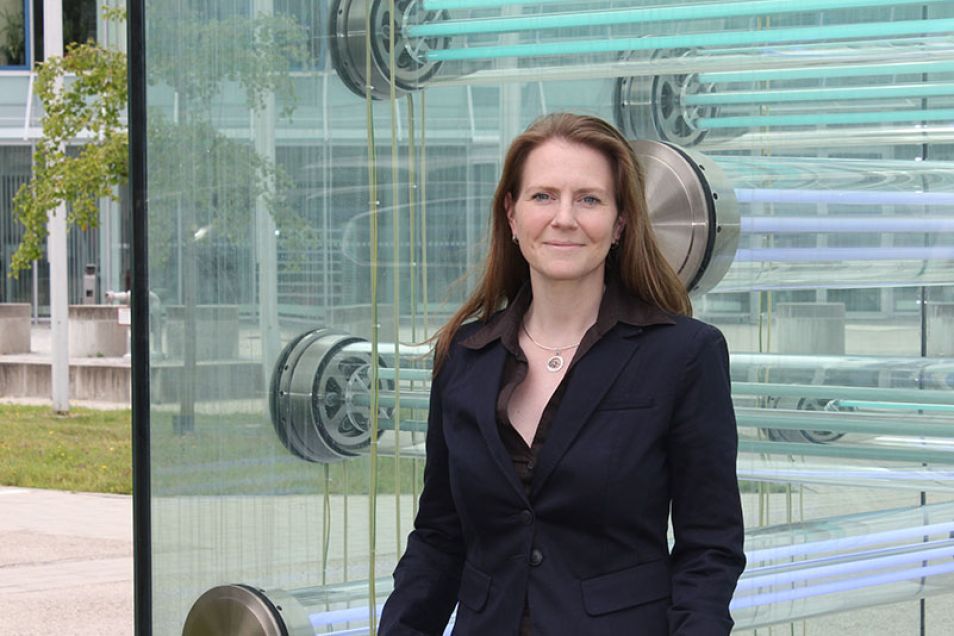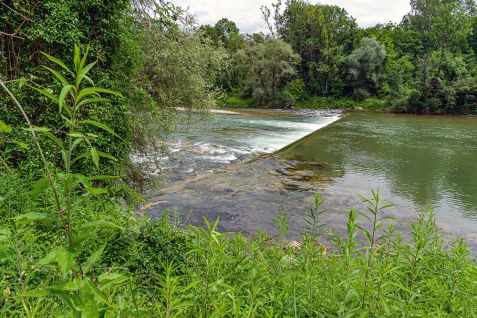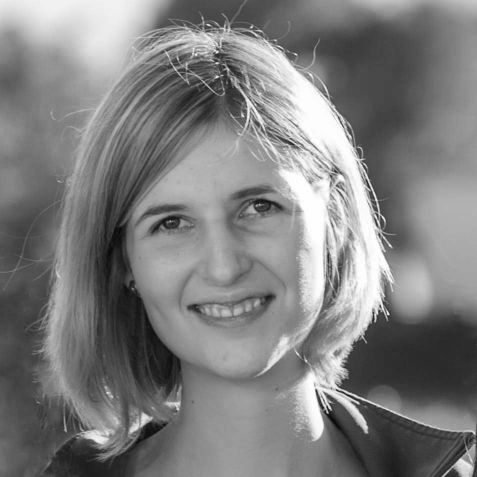MLZ is a cooperation between:
 > Technische Universität München
> Technische Universität München > Helmholtz-Zentrum Hereon
> Helmholtz-Zentrum Hereon
 > Forschungszentrum Jülich
> Forschungszentrum Jülich
MLZ is a member of:
 > LENS
> LENS > ERF-AISBL
> ERF-AISBL
MLZ on social media:

MLZ (eng)
Lichtenbergstr.1
85748 Garching
Everything under control
The environmental monitoring of FRM II

Dr. Carina Dirks-Fandrei is the head of the chemistry group at the research neutron source Heinz Maier-Leibnitz (FRM II). © FRM II / TUM
For one and a half years, Dr. Carina Dirks-Fandrei has been the head of the chemistry group at the research neutron source Heinz Maier-Leibnitz (FRM II). Together with radioprotection, she is responsible for monitoring the water, air and ground around the research facility.
Analytical instruments and computer screens are lined up closely side by side in the chemical laboratory. For a moment, Carina Dirks-Fandrei confers with a colleague, then she explains: “For measurements we always work according to the four-eyes-principle“. Thus, for each analysis, mutual control and transparency are always top priority.
Strict and independent controls
For our Self-Monitoring Ordinance, an accredited laboratory and the water authority carry out parallel reviews for conventional chemical analyses. For example, the Federal Office for Radiation Protection (BfS) and an independent measuring institute perform the radiological monitoring.
“We are controlled very well“, Dr. Dirks-Fandrei emphasizes. “We only take the fewest samples ourselves and we partly perform analyses for the environmental monitoring parallel to an independent measuring institute. The Federal Office for Radiation Protection (BfS), the State Office for Environment (LfU) and independent laboratories ensure a very close monitoring of the samples, the investigations and the results. It is precisely specified who has to measure what, how, where, when and with which instruments.“
“Numerous different sampling locations exist along the Isar for groundwater and sediment samples, plants, rocks or food samples. Even the fishes in the Isar are examined regularly “, she explains.
As a chemist at the research neutron source Carina Dirks-Fandrei advocates a continuous quality control of the measuring devices and analytical instruments in her laboratory. “We regularly take part in interlaboratory comparisons. There we analyse various samples that are afterwards compared with the results of all the other participating laboratories“, she explains. Thereby the quality of the results and the functioning of the instruments are maintained frequently. Furthermore, recurring inspections are performed of the instruments and controlled by an independent, external expert.
“Correct information is essential“

Slightly radioactive wastewater is released into the Isar at river kilometre 130,300. © FRM II / TUM
The current renewal request of the Technical University of Munich (TUM) for the permission to release water into the Isar river directly affects the work of Dirks-Fandrei. Therefore, she closely follows the controversial discussions about the controlled release of slightly radioactive wastewater into the Isar. “Many people simply are not totally informed about radioactivity“, she explains “But correct information is crucial, especially regarding radiation exposure – and it is also freely available, for example via the geoportal IMIS of the Federal Office for Radiation Protection“, Dirks-Fandrei says.
The potentially slightly radioactive wastewater under discussion comprises conventional wastewater, for example cleaning water or water from sinks, that comes from the controlled areas of the neutron research source and the Munich radiochemistry. Only if all specified limits are safely respected, and after a written approval of the general management, radiation protection commissioner and the chemical laboratory, will the slightly radioactive wastewater be released batchwise into the Isar.
Alternatives are not practical
Alternatives to releasing water into the Isar, like evaporation or external disposal, are neither practical nor useful, according to Dirks-Fandrei. “It must be stated that we are talking about slightly radioactive wastewater that undergoes a very fast mixing when it reaches the Isar’s water and so a very fast concentration decrease occurs“.
“It is my opinion that the lower the radiation exposure, the better“, Dirks-Fandreis clarifies. At the same time, the chemist emphasizes the many positive achievements in the field of radiopharmacy, research and development. With neutrons it is, for example, possible to decrypt cellular processes, which are essential for the development of new, effective medicines. Also, the developments in the area of energy storage and nuclear medicine are driven forward due to the research neutron source. Such positive achievements should be taken into account in the actual discussion.
More Information about the renewal request of TUM for the permission to release water into the Isar:

Teresa Kiechle
Press and Public Relations FRM II
MLZ is a cooperation between:
 > Technische Universität München
> Technische Universität München > Helmholtz-Zentrum Hereon
> Helmholtz-Zentrum Hereon
 > Forschungszentrum Jülich
> Forschungszentrum Jülich
MLZ is a member of:
 > LENS
> LENS > ERF-AISBL
> ERF-AISBL
MLZ on social media:


